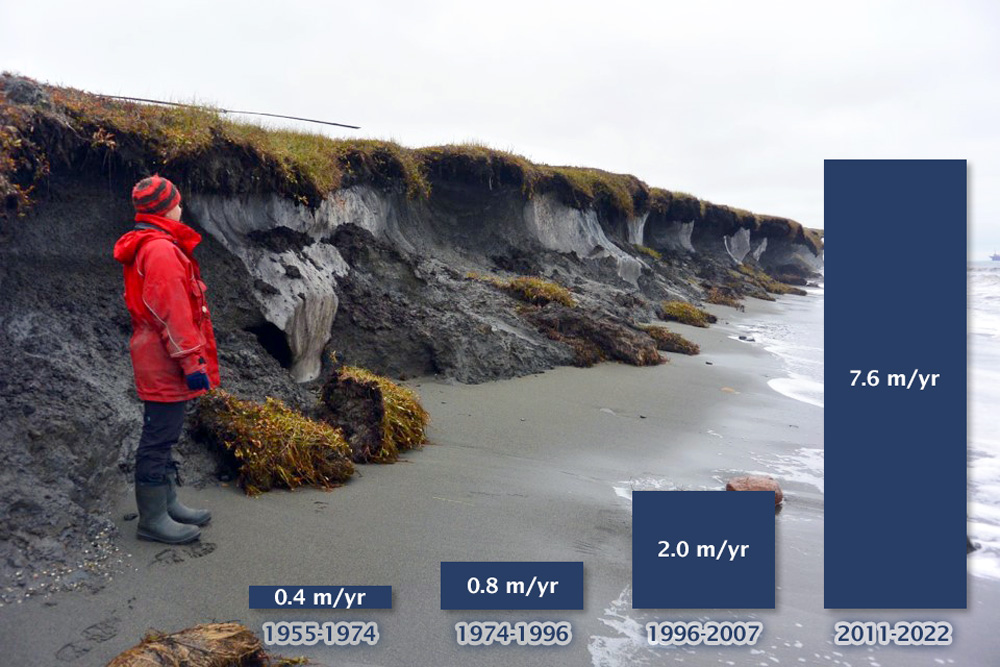Story Map »Shore Erosion«: Slide 5
Shoreline Erosion: Past Trends and Future Projections
Most Arctic permafrost coasts have seen an increase in erosion rates since the start of the 21st century.
Let’s focus on an exmple from the Yukon coast, Canada. As shown in the diagram below, the annual erosion rate at the shore near Iqpiqyuuq (Stokes Point) between 1996 and 2007 was double that of the previous period (1974-1996). In the following years (2011-2022), the erosion rate almost quadrupled compared to the 1996-2007 period. While the acceleration has been most pronounced since the 21st century, signs of increasing erosion began in the mid-20th century.

Figure: Shore erosion rates for the Yukon coast near Iqpiqyuuq (Stokes Point). ?
Looking ahead: erosion and climate change
Scientific models are used to estimate future erosion rates, incorporating a range of factors, such as key erosion drivers and greenhouse gas (GHG) emissions. GHGs play a crucial role in global warming, which accelerates permafrost thaw and shoreline erosion. The results of such a model are presented below. As shown, erosion rates are expected to increase in the future.

Figure: Modelled Arctic coastal erosion rates at different greenhouse gas emission scenarios. ?
The figure above illustrates the mean Arctic erosion rate. While the rate appears relatively low in absolute terms, this is due to the inclusion of areas with no erosion or even coastal growth (see also slide 3). The grey line represents measured rates up until the early 21st century, while the coloured lines show modelled rates based on different IPCC scenarios.
The model has been run for three warming scenarios corresponding to various levels of GHG emissions. Blue indicates a future with low GHG emissions, yellow represents a medium level of emissions, and red signifies a high level of emissions. Even in the blue scenario, coastal erosion remains stable, with only a slight tendency to decrease. In the other two scenarios, erosion rates continue to rise.
Further reading
For more information on global warming and GHG emissions, including Shared Socioeconomic Pathways (SSP), take a look at the Intergovernmental Panel on Climate Change (IPCC) Report.
Boehm S., and Schumer C. (2023): 10 Big Findings from the IPCC Report on Climate Change, World Resources Institute. URL: https://www.wri.org/insights/2023-ipcc-ar6-synthesis-report-climate-change-findings
IPCC (2023): Summary for Policymakers. In: Climate Change 2023: Synthesis Report. URL: https://www.ipcc.ch/report/sixth-assessment-report-cycle/
